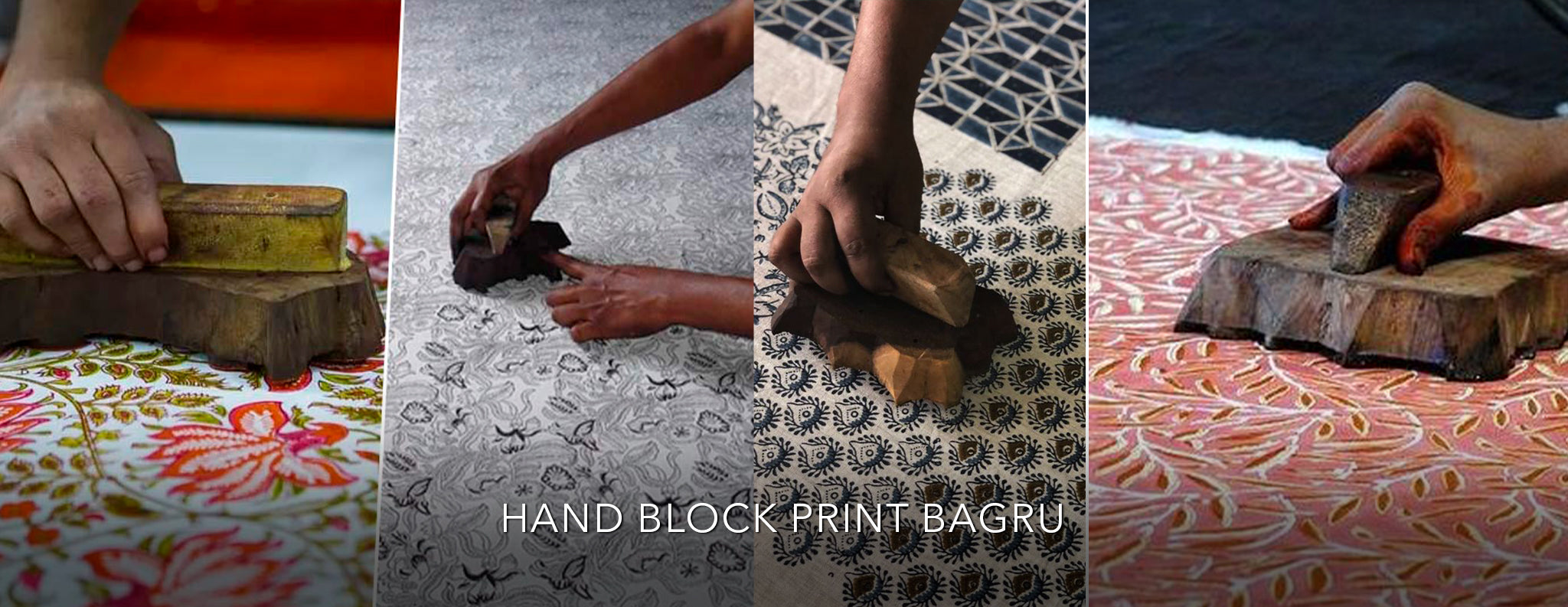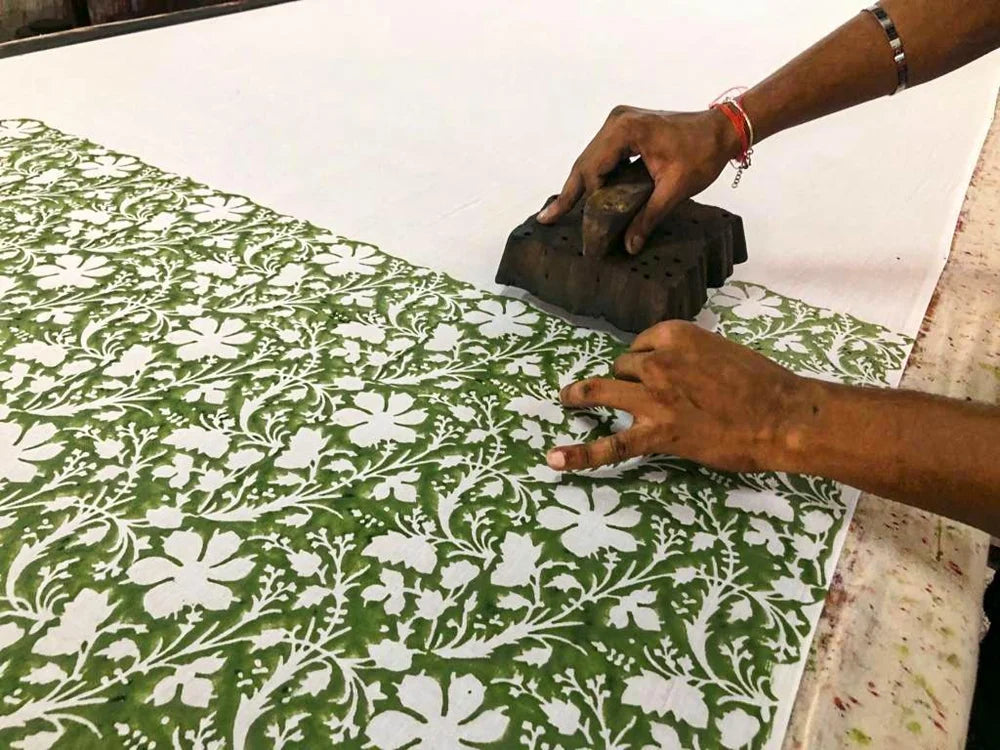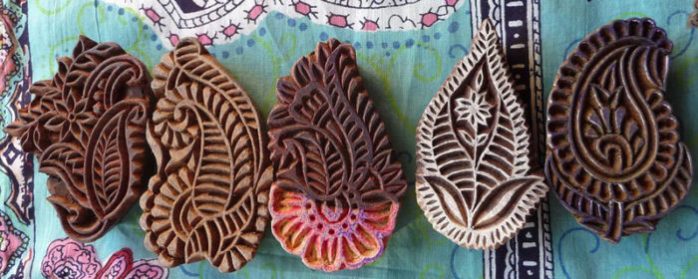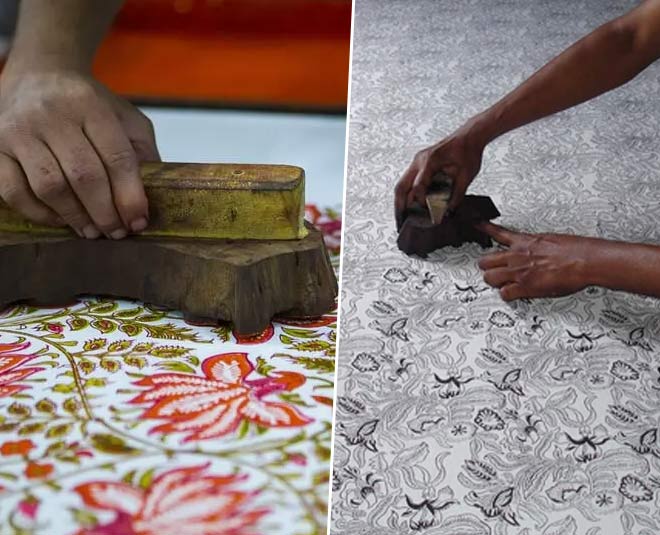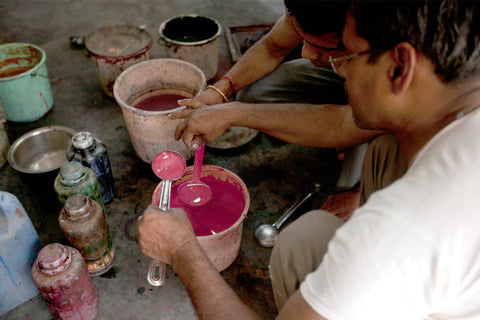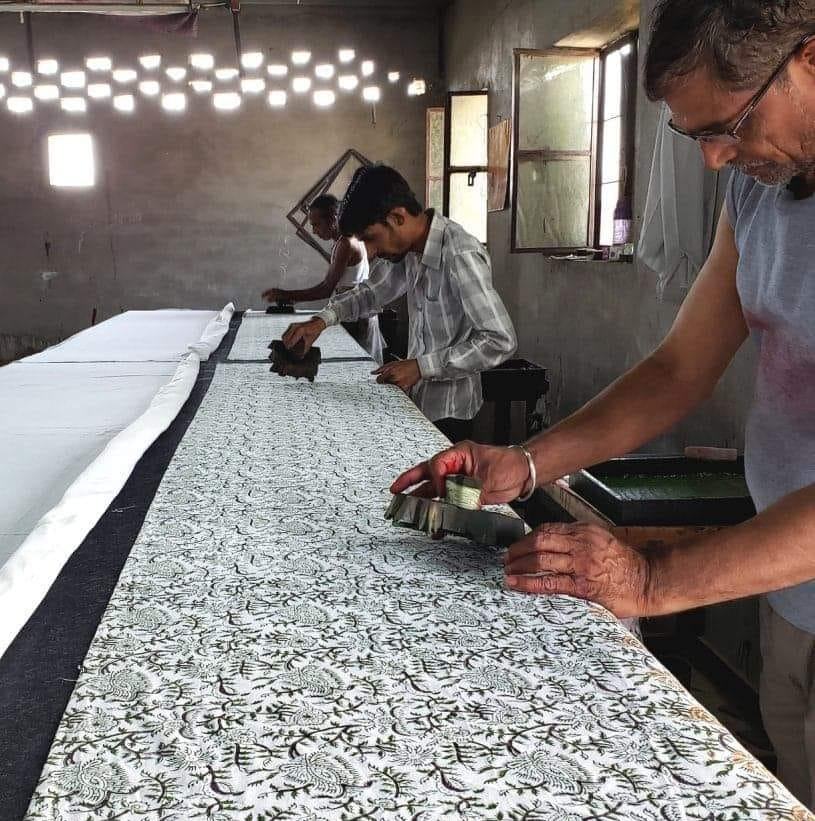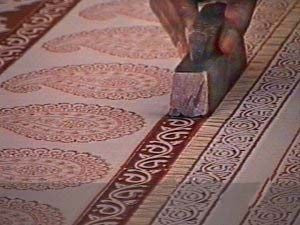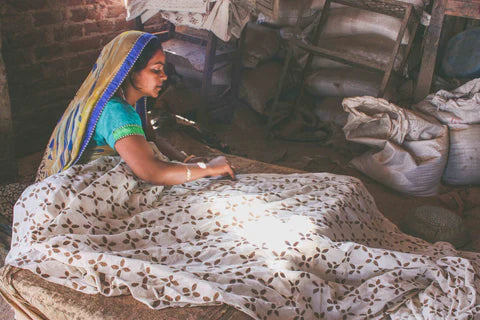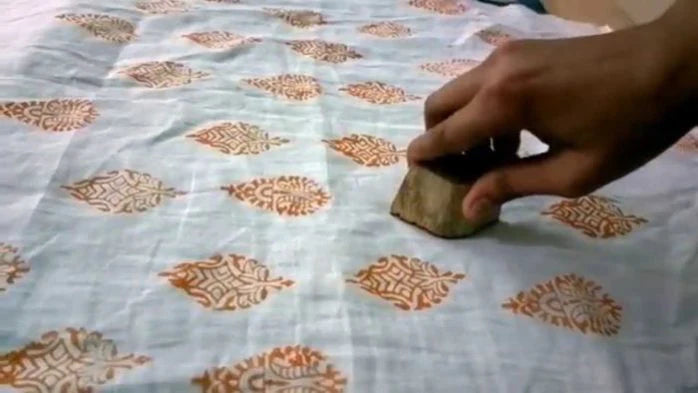History:
-
The traditional craft of hand block printing on textiles, using rich natural colors, has been practiced in Rajasthan for over 500 years. This technique was introduced to the Jaipur region by the Chhipa community, who originally hailed from Bagru Village, renowned today for its vegetable dye and mud resist (Dabu) block prints. Block printing has been passed down from generation to generation and then the locality passed it through places, such as Sanganer, close to Jaipur. And more recently, in the traditional Bagru style, every family creates its own secret 'recipes' for plant-based dyes, lovingly kept and then passed on from generation to generation. The quality of colors solely relies on many factors, including the plant, the water, and expertise of the printing master. However, more modern forms of block printing, like that in Sanganer, make use of AZO-free pigments mixed with binders.
PROCESS:
-
Block Carving
First a design is drawn on paper and then carved over Sheesham wood blocks. Block printing is a process in which one such block represents every color of the print, usually measuring 18-25 cm. All the hand-carved blocks create the final design. Stamped in rows across the fabric, it gives a seamless pattern in the form of a single repeat from the printed blocks.
-
In the case of design, every color used is carved onto a separate block, with the apprenticeship of years to perfect the art of block carving. And all of these blocks are done by hand.
-
This would start with the ground color block, which is actually called 'gud,' and stamped first. The outline block, called 'rekh,' is the most delicate and usually carries floral or lattice patterns. Lastly, the fill block, called 'datta,' fills up the rest of the print.
-
Dye Preparation and Color Blending Process
After the blocks are carved, the master printer(Dye) prepares the colors for printing. The colors are poured into wooden trays, each containing a handmade mesh surface that helps evenly distribute the color across the bottom of the block. Each time the block is stamped, it is first pressed into the color tray and then onto the fabric to create the repeat pattern. The colors used are AZO-free, eco-friendly synthetic pigments, commonly employed in Sanganer block printing.For each new design, we do a color new color combinations.We use Pantone TPG/TPX reference codes for color matching.Above, our master printer, Ghanshyam Ji, is working with our team to develop a series of new olorways for a new collection.
-
Printing Process
Every color design has to be stamped separately on the fabric, it is very skillful and demanding in patience. Color after color, the design has to be stamped on the fabric. The minute human imperfections that this handcraft gives include an aesthetic appeal, which is the hallmark of block prints. The outcome of all this meticulous craftsmanship is an evergreen beauty, so every garment produced from this piece of fabric will be different.
-
Block Printing – Layering Each Color
The printing master must align each block with precision, using the guide carved on the left edge of the block as a reference. Every printer has a unique style, considered their ‘signature,’ and this personal touch is reflected in the final design. As the blocks are aligned and stamped, each color is layered onto the pattern, creating subtle gaps and overlaps. These variations are part of what gives block printing its distinct, handcrafted look, with a gentle interplay of light and dark across the design.
-
The Rhythmic Sound of Craftsmanship
In block printing villages, the rhythmic ‘tock-tock’ sound of the block being stamped on fabric fills the air. This enchanting sound resonates through the village, serving as a reminder of the artisan’s important work and the rich tradition of this craft.
-
STYLE
Bagru block printing is a traditional art; it is a combination of natural vegetable dyes and mud-resist techniques in cotton and silk printing. Nature has inspired the designs of Bagru printing; most of the floral, leaf, and geometric patterns are derived from nature, while Persian motifs enter into this style after some time and change the design into more intricate pieces of work.
-
Today, it has spread to Jaipur and Sanganer, where AZO-free synthetic dyes, like pigments and indigo sol, are easily used. Modern dyes present a larger range of colours as well as make possible a new variation in printing techniques; it brings tradition and innovation into a wedding.
-
Indo-Western Designs
Recently, western designers collaborated with local artisans for styles which are really Indo-Western and inspired people from other cultures, pop-art, nature, and city-scapes. That helps everyone, as new designs come along with that collaboration, but is also helping to tell the story of block printing and keeping the market alive.
We work both in Bagru and Sanganer. In Sanganer, we work at our facility using AZO-free, eco-friendly, pigment colors with our own print designs. The advantage of 'modern' synthetic dyes is that they are colorfast, easier to produce, and machine washable. In Bagru, we work with a local printer using vegetable dye and dabu mud resist techniques in traditional prints such as indigo prints.
BAGRU PRINTING
-
Dabu Printing and Vegetable Dyes
Recipes for Bagru-style vegetable dye prints have been handed down over several generations within artisan families. Often these take months to repair and in some cases are weather-, water-, and crop-quality-dependent, which can impact final hue.
ARTISAN STANDARD
-
Block prints inherently are hand-crafted, and slight color differences within a print or between runs, in general, are a natural part of the process. These color variations, which might be due to seasonal differences or the times of the printing, are extremely desirable to those who would like handmade pieces and definite characteristics of artisan textiles.
-
For Purchase
-
Block Printed Clothes
For wholesale inquiries, please contact parikala.com at wecare@parikala.com. Kindly include your registered company name, address, website, and a brief description of what you’re looking for.
-

